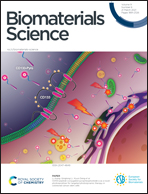In vivo behavior of bioactive glass-based composites in animal models for bone regeneration
Abstract
This review presents the recent advances and the current state-of-the-art of bioactive glass-based composite biomaterials intended for bone regeneration. Composite materials comprise two (or more) constituents at the nanometre scale, in which typically, one constituent is organic and functions as the matrix phase and the other constituent is inorganic and behaves as the reinforcing phase. Such materials, thereby, more closely resemble natural bio-nanocomposites such as bone. Various glass compositions in combination with a wide range of natural and synthetic polymers have been evaluated in vivo under experimental conditions ranging from unloaded critical-sized defects to mechanically-loaded, weight-bearing sites with highly favourable outcomes. Additional possibilities include controlled release of anti-osteoporotic drugs, ions, antibiotics, pro-angiogenic substances and pro-osteogenic substances. Histological and morphological evaluations suggest the formation of new, highly vascularised bone that displays signs of remodelling over time. With the possibility to tailor the mechanical and chemical properties through careful selection of individual components, as well as the overall geometry (from mesoporous particles and micro-/nanospheres to 3D scaffolds and coatings) through innovative manufacturing processes, such biomaterials present exciting new avenues for bone repair and regeneration.



 Please wait while we load your content...
Please wait while we load your content...